Spatial Pattern Characteristics and Factors for the Present Status of Rural Settlements in the Lijiang River Basin Based on ArcGIS
Abstract
1. Introduction
2. Research Methods and Data Sources
2.1. Geographic Area Data
2.2. Data Sources
2.3. Getis-Ord General G Analyses
2.4. Hot Spot Analysis (Getis-Ord Gi*)
2.5. Kernel Density Estimation
2.6. Landscape Pattern Index
3. Results
3.1. The Lijiang River Basin Shows a Micro/Small-Scale and Medium/Large-Scale Rural Settlement Cluster Distribution
3.2. Micro/Small-Scale Villages Are Mainly Located in the Upstream Basin, and Large Villages Are Mainly Located in the Middle and Downstream Basins
3.3. The Rural Settlements in the Upstream, Midstream, and Downstream basins of the Lijiang River Basin, Respectively, Have Banded, Radiating, and Multi-Core Fragmented Distribution
3.4. The Distribution of Rural Settlements in the Lijiang River Basin from the Perspective of the Landscape Pattern Index
3.5. Elevation and Slope Affect the Spatial Form of Rural Settlements in the Lijiang River Basin
3.6. Karst Landforms Affect the Spatial Form of Rural Settlements in the Lijiang River Basin
3.7. River Trunk Channels Affect the Spatial Form of Rural Settlements in the Lijiang River Basin
3.8. Other Factors Affecting the Spatial Form of Rural Settlements in the Lijiang River Basin
4. Discussion
5. Conclusions
Supplementary Materials
Author Contributions
Funding
Institutional Review Board Statement
Informed Consent Statement
Data Availability Statement
Conflicts of Interest
References
- Dasgupta, P.; Morton, J.; Dodman, D.; Karapinar, B.; Meza, F.; Rivera-Ferre, M.G.; Toure Sarr, A.; Vincent, K.E. Rural areas. In Climate Change 2014: Impacts, Adaptation, and Vulnerability. Part A: Global and Sectoral Aspects. Contribution of Working Group II to the Fifth Assessment Report of the Intergovernmental Panel on Climate Change; Field, C.B., Barros, V.R., Dokken, D.J., Mach, K.J., Mastrandrea, M.D., Bilir, T.E., Chatterjee, M., Ebi, K.L., Estrada, Y.O., Genova, R.C., et al., Eds.; Cambridge University Press: Cambridge, UK; New York, NY, USA, 2014; pp. 613–657. [Google Scholar]
- Hoffman; George, W. Transformation of rural settlement in Bulgaria. Geogr. Rev. 1964, 54, 45–64. [Google Scholar] [CrossRef]
- Nepal, S.K. Tourism and rural settlements nepal’s annapurna region. Ann. Tour. Res. 2007, 34, 855–875. [Google Scholar] [CrossRef]
- Tang, C.; He, Y.; Zhou, G.; Zeng, S.; Xiao, L. Optimizing the spatial organization of rural settlements based on life quality. J. Geogr. Sci. 2018, 28, 685–704. [Google Scholar] [CrossRef]
- Song, W.; Li, H. Spatial pattern evolution of rural settlements from 1961 to 2030 in tongzhou district, china. Land Use Policy 2020, 99, 105044. [Google Scholar] [CrossRef]
- Fleisher, J.B. Swahili synoecism: Rural settlements and town formation on the central east african coast, a.D. 750–1500. J. Field Archaeol. 2010, 35, 265–282. [Google Scholar] [CrossRef]
- Valsson, T.; Ulfarsson, G.F.; Gardarsson, S.M. A theory of the evolution of settlement structures based on identification and use of patterns: Iceland as a case study. Futures 2013, 54, 19–32. [Google Scholar] [CrossRef]
- Paquette, S.; Domon, G. Changing ruralities, changing landscapes: Exploring social recomposition using a multi-scale approach. J. Rural. Stud. 2003, 19, 425–444. [Google Scholar] [CrossRef]
- Ristić, D.; Vukoičić, D.; Milinčić, M. Tourism and sustainable development of rural settlements in protected areas—Example np кopaonik (serbia). Land Use Policy 2019, 89, 104231. [Google Scholar] [CrossRef]
- Bournaris, T.; Moulogianni, C.; Manos, B. A multicriteria model for the assessment of rural development plans in greece. Land Use Policy 2014, 38, 1–8. [Google Scholar] [CrossRef]
- Song, W.; Liu, M. Assessment of decoupling between rural settlement area and rural population in china. Land Use Policy 2014, 39, 331–341. [Google Scholar] [CrossRef]
- Cheng, P.; Qin, Y.; Zhu, S.; Kong, X. Ecological disturbance of rural settlement expansion: Evidence from nantong, Eastern China. Land 2022, 11, 1741. [Google Scholar] [CrossRef]
- Dijkshoorn, K.; van Engelen, V.; Huting, J. Soil and Landform Properties for Lada Partner Countries (Argentina, China, Cuba, Senegal and the Gambia, South Africa and Tunisia); ISRIC Report 2008/06 and GLADA Report 2008/03; ISRIC—World Soil Information: Wageningen, The Netherlands; FAO: Amsterdam, The Netherlands, 2008; Volume 6, p. 23. [Google Scholar]
- Silverman, B.W. Density Estimation for Statistics and Data Analysis; Routledge: Oxfordshire, UK, 2018. [Google Scholar]
- Sweeting, M.M. Karst in China: Its Geomorphology and Environment; Springer Science & Business Media: Berlin/Heidelberg, Germany, 2012; Volume 15. [Google Scholar]
- Xiaoan, H. Clan construction and identity change of tang clan in guilin since qing dynasty. J. Hezhou Univ. 2021, 37, 22–27. [Google Scholar]
- Qu, Y.; Jiang, G.; Zhao, Q.; Ma, W.; Zhang, R.; Yang, Y. Geographic identification, spatial differentiation, and formation mechanism of multifunction of rural settlements: A case study of 804 typical villages in shandong province, china. J. Clean. Prod. 2017, 166, 1202–1215. [Google Scholar] [CrossRef]
- Lu, M.; Wei, L.; Ge, D.; Sun, D.; Zhang, Z.; Lu, Y. Spatial optimization of rural settlements based on the perspective of appropriateness–domination: A case of xinyi city. Habitat Int. 2020, 98, 102148. [Google Scholar] [CrossRef]
- Govind, N.R.; Ramesh, H. The impact of spatiotemporal patterns of land use land cover and land surface temperature on an urban cool island: A case study of bengaluru. Environ. Monit. Assess. 2019, 191, 283. [Google Scholar] [CrossRef]
- Guerri, G.; Crisci, A.; Messeri, A.; Congedo, L.; Munafò, M.; Morabito, M. Thermal summer diurnal hot-spot analysis: The role of local urban features layers. Remote Sens. 2021, 13, 538. [Google Scholar] [CrossRef]
- Bonnier, A.; Finné, M.; Weiberg, E. Examining land-use through gis-based kernel density estimation: A re-evaluation of legacy data from the berbati-limnes survey. J. Field Archaeol. 2019, 44, 70–83. [Google Scholar] [CrossRef]
- Cai, X.; Wu, Z.; Cheng, J. Using kernel density estimation to assess the spatial pattern of road density and its impact on landscape fragmentation. Int. J. Geogr. Inf. Sci. 2013, 27, 222–230. [Google Scholar] [CrossRef]
- Wan, L.; Zhang, Y.; Zhang, X.; Qi, S.; Na, X. Comparison of land use/land cover change and landscape patterns in honghe national nature reserve and the surrounding jiansanjiang region, China. Ecol. Indic. 2015, 51, 205–214. [Google Scholar] [CrossRef]
- Zhang, F.; Chen, Y.; Wang, W.; Jim, C.Y.; Zhang, Z.; Tan, M.L.; Liu, C.; Chan, N.W.; Wang, D.; Wang, Z.; et al. Impact of land-use/land-cover and landscape pattern on seasonal in-stream water quality in small watersheds. J. Clean. Prod. 2022, 357, 131907. [Google Scholar] [CrossRef]
- Thapa, G.B.; Rasul, G. Implications of changing national policies on land use in the chittagong hill tracts of bangladesh. J. Environ. Manag. 2006, 81, 441–453. [Google Scholar] [CrossRef] [PubMed]
- Martín, C.E.; Chehébar, C. The national parks of Argentinian Patagonia—Management policies for conservation, public use, rural settlements, and indigenous communities. J. R. Soc. N. Z. 2001, 31, 845–864. [Google Scholar] [CrossRef]
- Yang, J.; Yang, R.; Chen, M.-H.; Su, C.-H.J.; Zhi, Y.; Xi, J.; Management, T. Effects of rural revitalization on rural tourism. J. Hosp. Tour. Manag. 2021, 47, 35–45. [Google Scholar] [CrossRef]
- Fleischer, A.; Pizam, A. Rural tourism in Israel. Tour. Manag. 1997, 18, 367–372. [Google Scholar] [CrossRef]
- Safiullin, L.; Gafurov, I.; Shaidullin, R.; Safiullin, N. Socio-economic development of the region and its historical and cultural heritage. Life Sci. J. 2014, 11, 400–404. [Google Scholar]
- Amit-Cohen, I.; Sofer, M. Cultural heritage and its economic potential in rural society: The case of the kibbutzim in Israel. Land Use Policy 2016, 57, 368–376. [Google Scholar] [CrossRef]
- Prus, B.; Wilkosz-Mamcarczyk, M.; Salata, T.J.R.S. Landmarks as cultural heritage assets affecting the distribution of settlements in rural areas—An analysis based on lidar dtm, digital photographs, and historical maps. Remote Sens. 2020, 12, 1778. [Google Scholar] [CrossRef]
- Ekici, S.C.; Özçakır, Ö.; Bilgin Altinöz, A.G. Sustainability of historic rural settlements based on participatory conservation approach: Kemer village in Turkey. J. Cult. Herit. Manag. Sustain. Dev. 2022. [Google Scholar] [CrossRef]
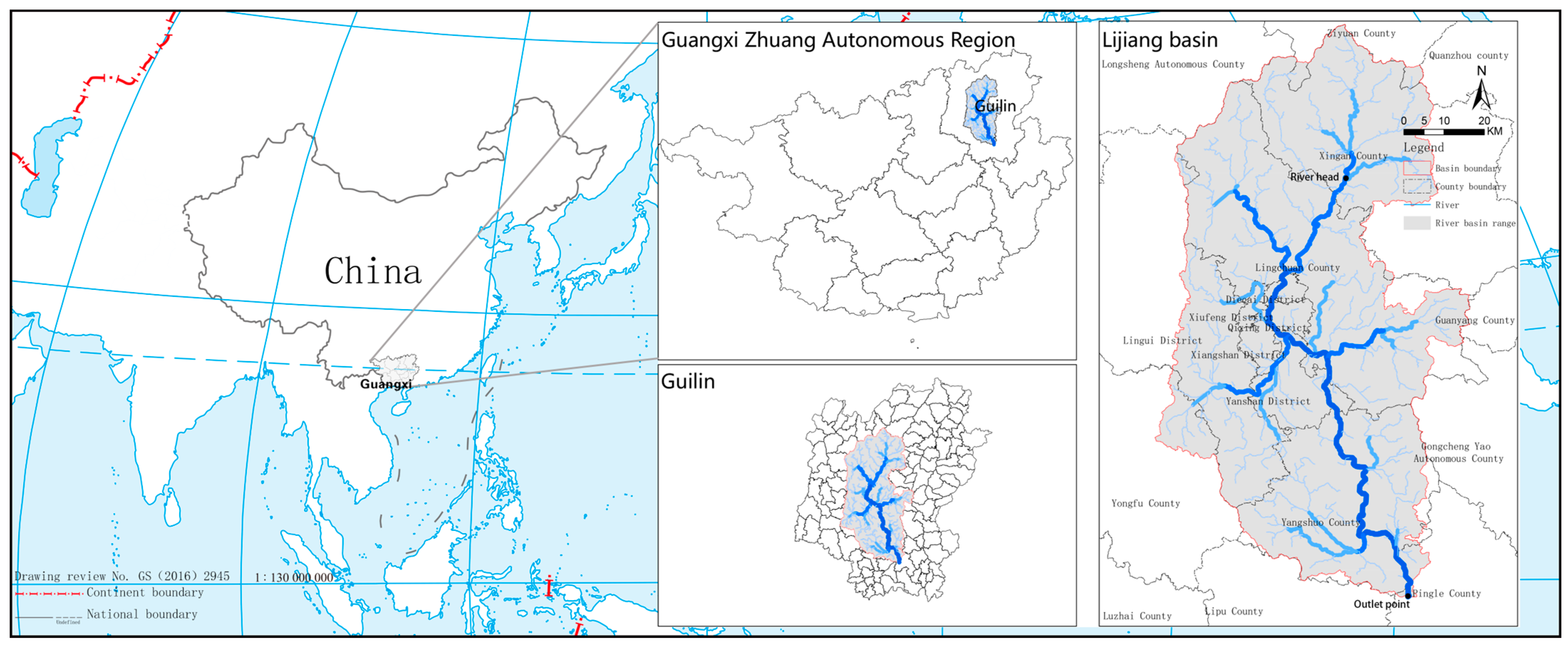
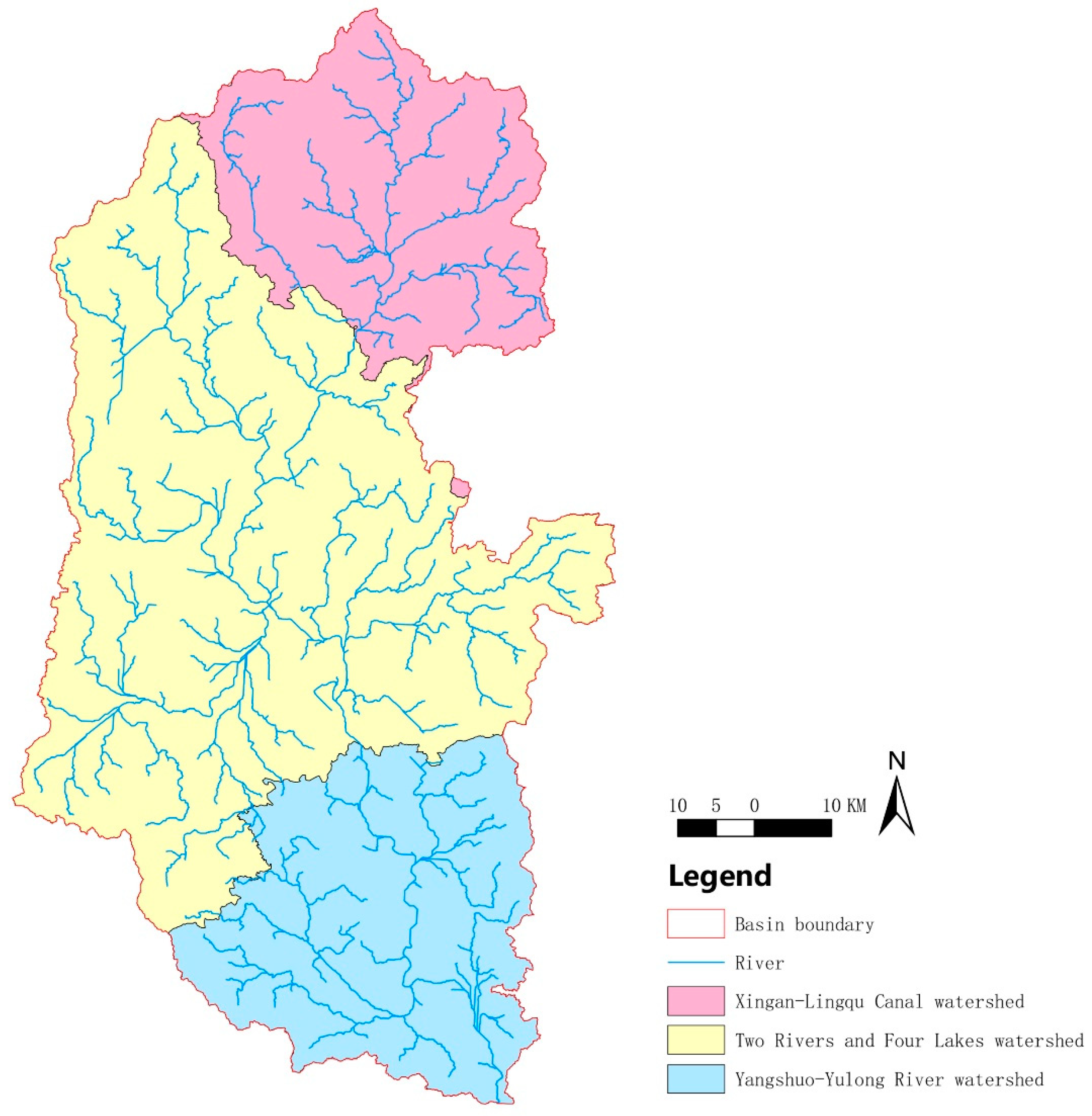
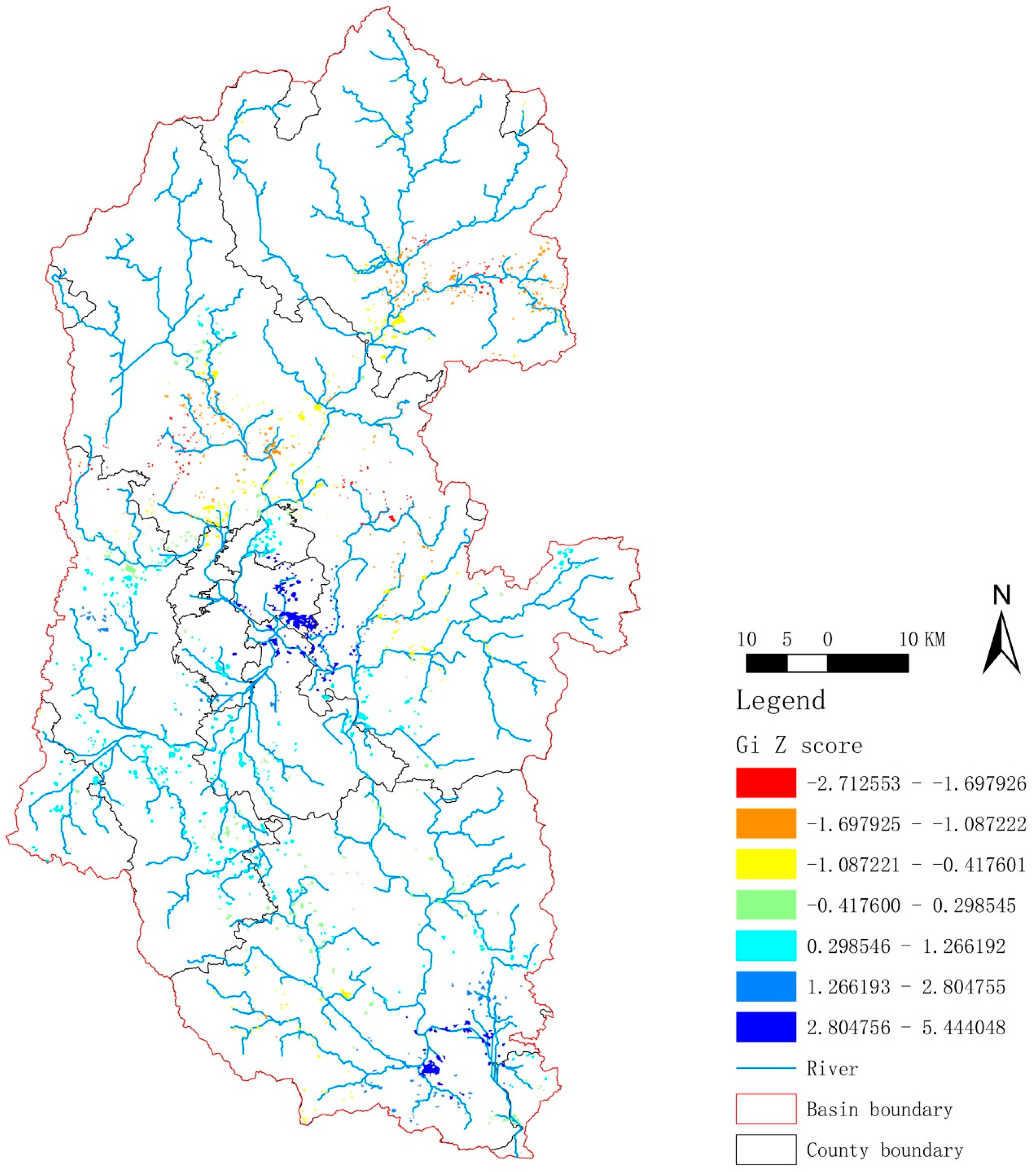

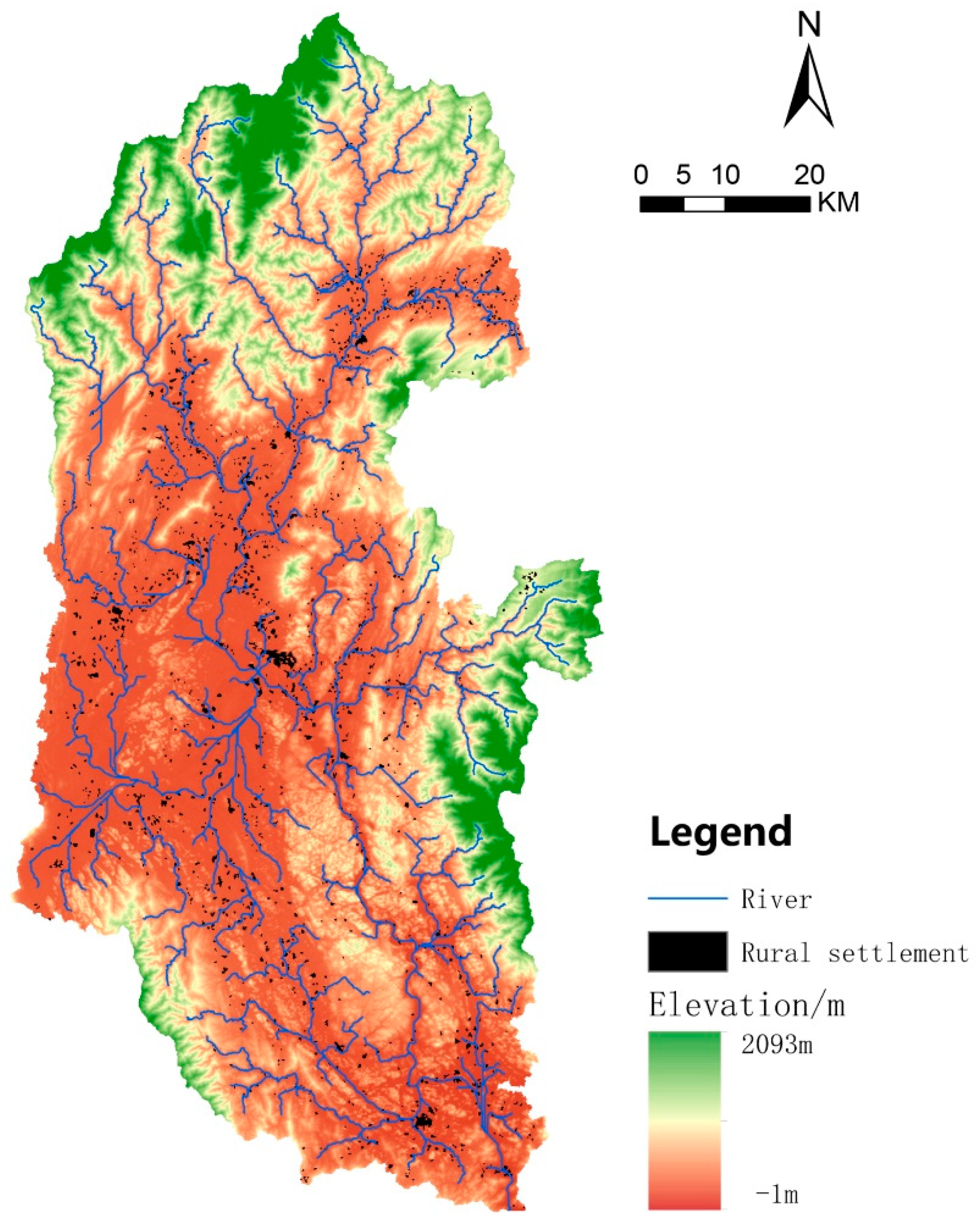
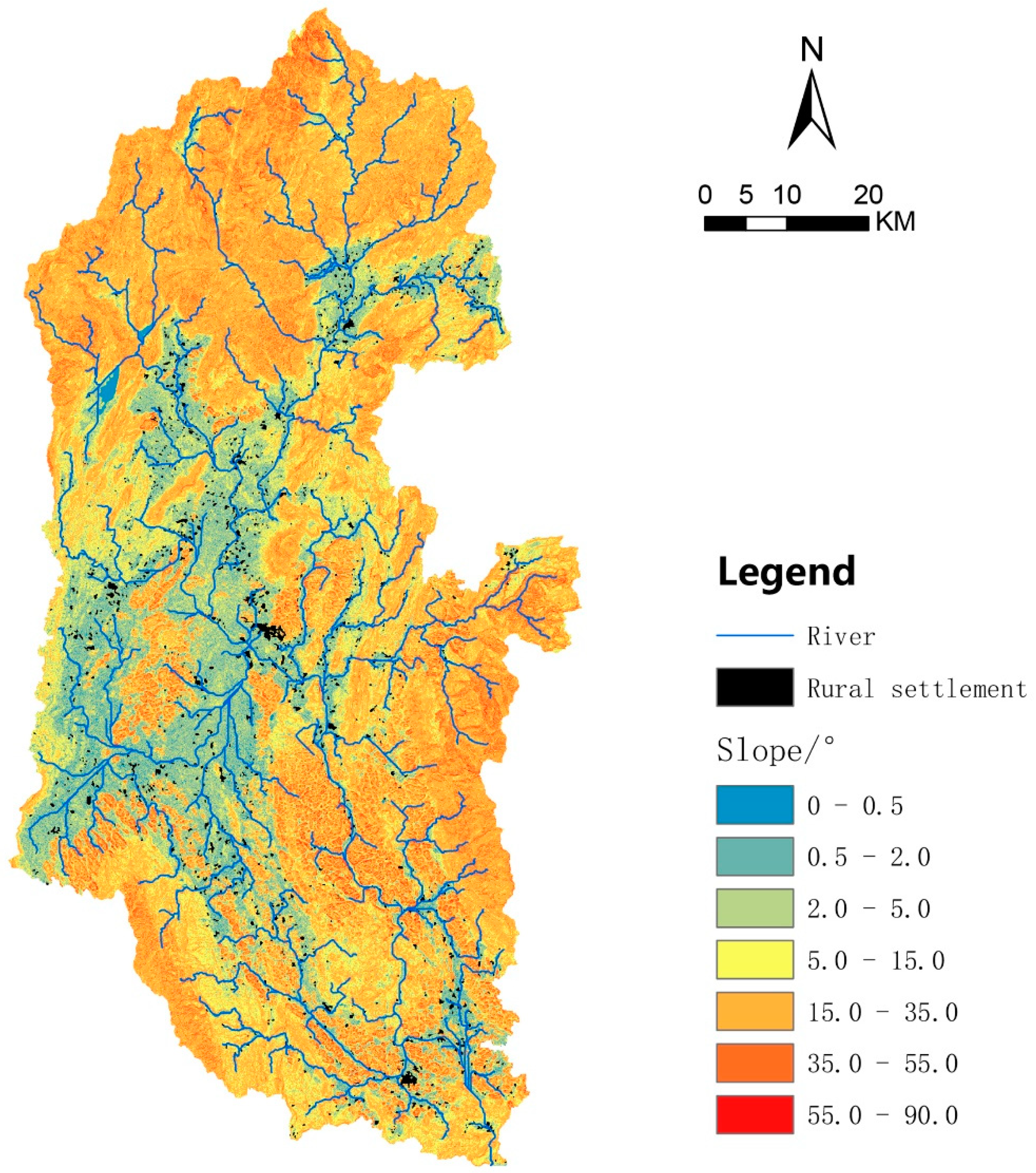
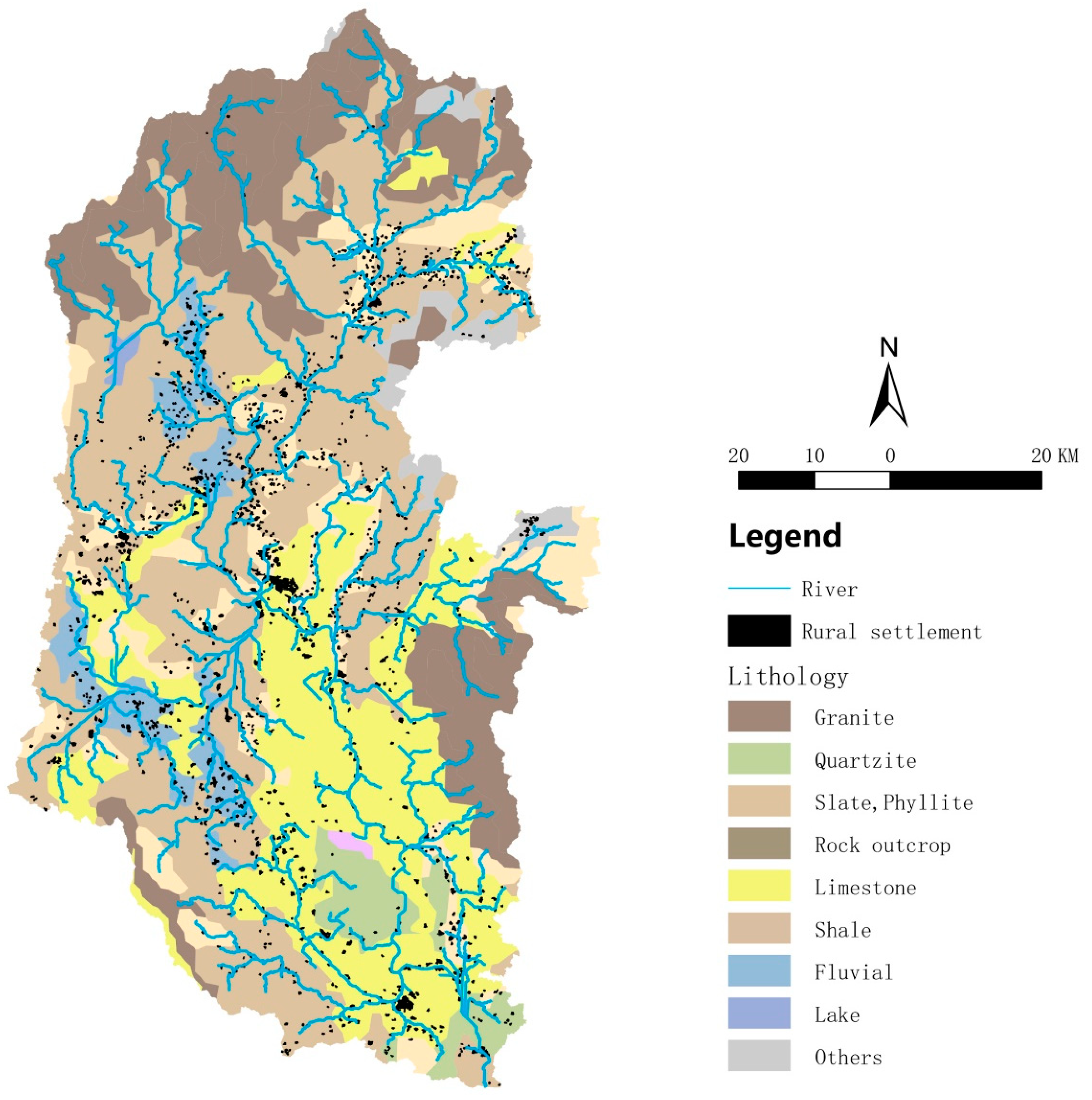
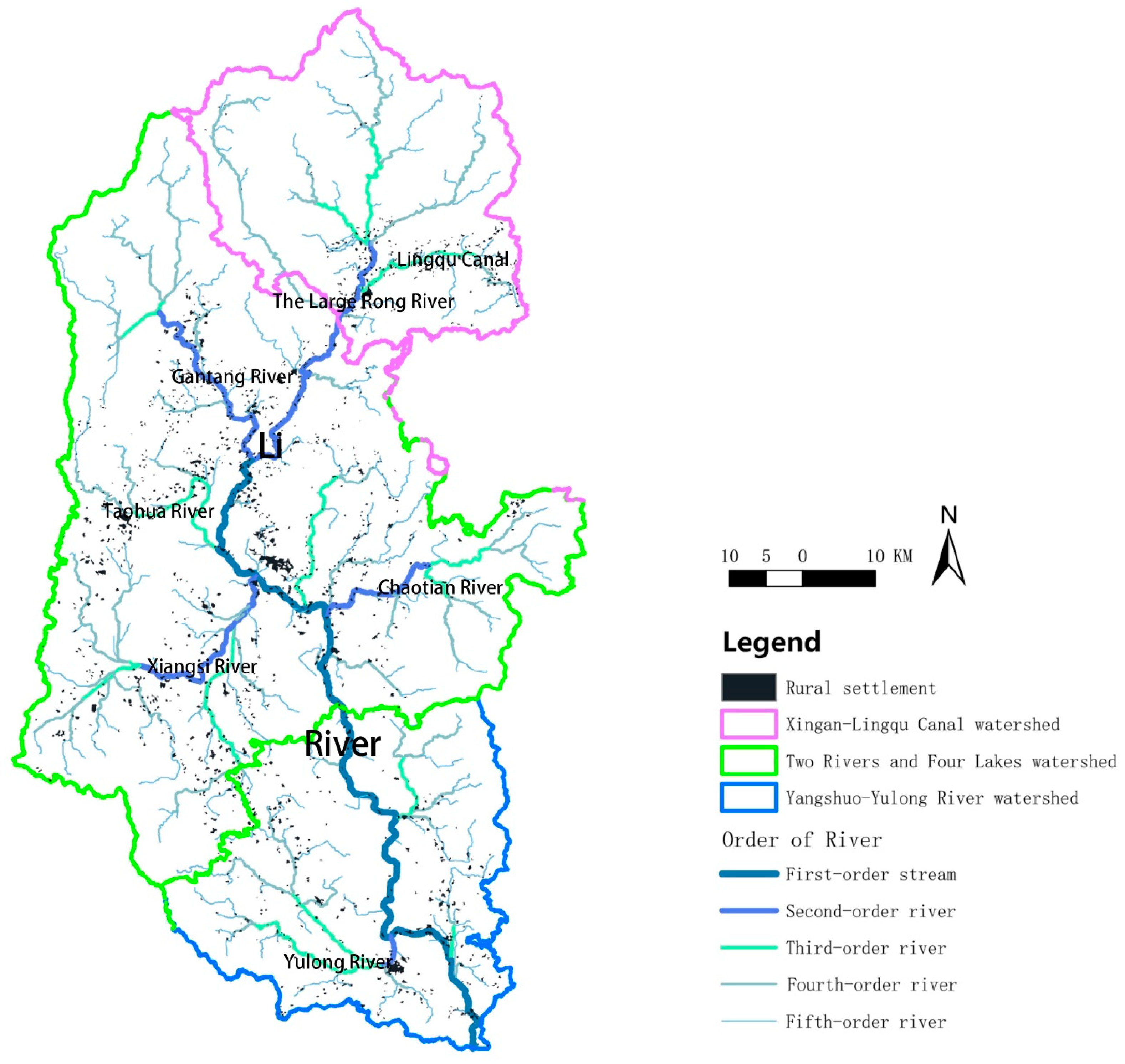

| Landscape Pattern Index | Index Type | Indicator Meaning |
|---|---|---|
| NP (each) | Poly-dispersion index | The total number of patches. When describing landscape heterogeneity, the value is positively correlated with landscape fragmentation. |
| PD (each/100 hm2) | The number of patches in 100 hm2. The value is positively correlated with landscape fragmentation. | |
| CA (hm2) | Edge area index | The total area of a certain type of patch. |
| PLAND (%) | The percentage of a certain type of patch in the overall landscape area. | |
| AREA-MN (hm2) | The average area size of a certain type of patch. | |
| LPI (%) | The proportion of the largest patch in a given patch type occupying the entire landscape area. | |
| LSI | Shape index | A larger value indicates a more irregular patch shape. |
| AI (%) | The larger the value, the greater the aggregation. |
| Types of Rural Settlements | Micro Type (<2 hm2) | Small Type (2–8 hm2) | Medium Type (8–20 hm2) | Large Type (>20 hm2) | Total |
|---|---|---|---|---|---|
| Number | 128 | 970 | 292 | 73 | 1463 |
| Area (hm2) | 209.0 | 4211.9 | 3502.6 | 3144.4 | 11,068.0 |
| Reaches | CA | PLAND | NP | PD | LPI | AREA_MN | LSI | AI |
|---|---|---|---|---|---|---|---|---|
| Upper | 1293.75 | 1.01 | 234 | 0.18 | 0.086 | 5.53 | 2.15 | 85.30 |
| Medium | 7355.16 | 2.00 | 934 | 0.25 | 0.12 | 7.87 | 2.42 | 87.09 |
| Lower | 2542.77 | 1.81 | 300 | 0.21 | 0.17 | 8.48 | 2.01 | 87.44 |
Disclaimer/Publisher’s Note: The statements, opinions and data contained in all publications are solely those of the individual author(s) and contributor(s) and not of MDPI and/or the editor(s). MDPI and/or the editor(s) disclaim responsibility for any injury to people or property resulting from any ideas, methods, instructions or products referred to in the content. |
© 2023 by the authors. Licensee MDPI, Basel, Switzerland. This article is an open access article distributed under the terms and conditions of the Creative Commons Attribution (CC BY) license (https://creativecommons.org/licenses/by/4.0/).
Share and Cite
Zheng, W.; Cao, W.; Li, G.; Zhu, S.; Zhang, X. Spatial Pattern Characteristics and Factors for the Present Status of Rural Settlements in the Lijiang River Basin Based on ArcGIS. Int. J. Environ. Res. Public Health 2023, 20, 4124. https://doi.org/10.3390/ijerph20054124
Zheng W, Cao W, Li G, Zhu S, Zhang X. Spatial Pattern Characteristics and Factors for the Present Status of Rural Settlements in the Lijiang River Basin Based on ArcGIS. International Journal of Environmental Research and Public Health. 2023; 20(5):4124. https://doi.org/10.3390/ijerph20054124
Chicago/Turabian StyleZheng, Wenjun, Wentao Cao, Guifang Li, Sijia Zhu, and Xianyan Zhang. 2023. "Spatial Pattern Characteristics and Factors for the Present Status of Rural Settlements in the Lijiang River Basin Based on ArcGIS" International Journal of Environmental Research and Public Health 20, no. 5: 4124. https://doi.org/10.3390/ijerph20054124
APA StyleZheng, W., Cao, W., Li, G., Zhu, S., & Zhang, X. (2023). Spatial Pattern Characteristics and Factors for the Present Status of Rural Settlements in the Lijiang River Basin Based on ArcGIS. International Journal of Environmental Research and Public Health, 20(5), 4124. https://doi.org/10.3390/ijerph20054124







